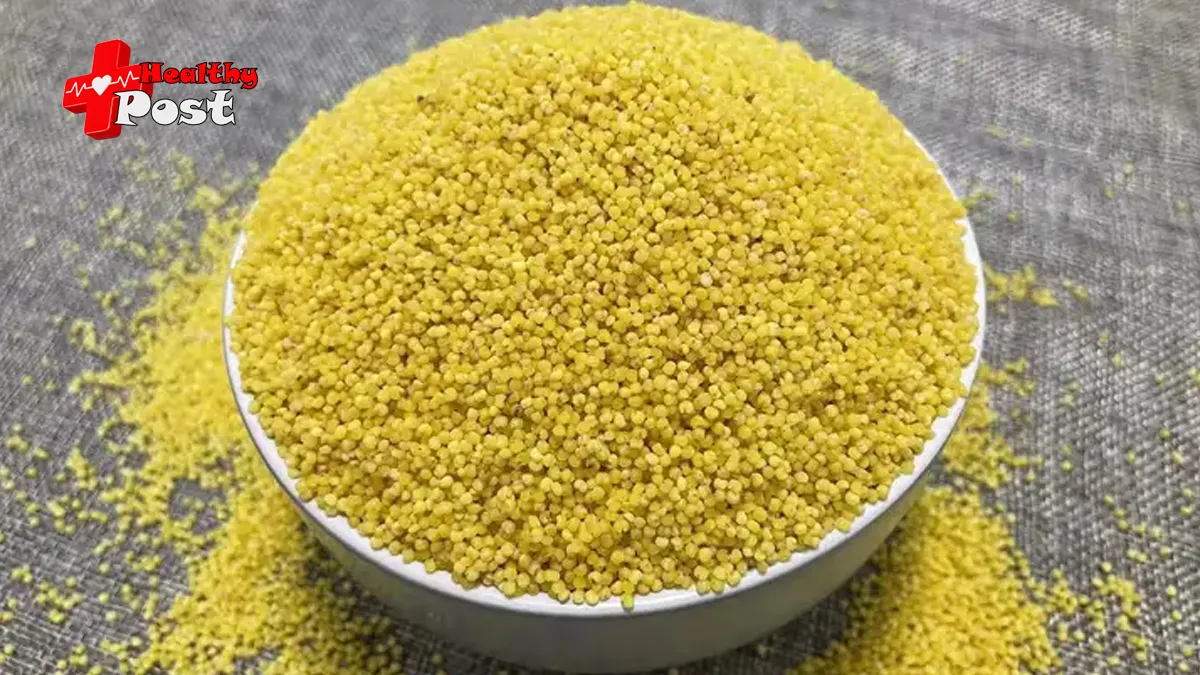
Eating yellow millet doubles your health! Here are some ways to eat millet in summer.
Millet is a top-performing grain for health and wellness. Planted in spring and harvested in autumn, millet receives the most comprehensive natural energy from heaven and earth, absorbing the richest earth energy. As a fruit for the spleen, it is highly nourishing to the spleen and stomach. Millet has a sweet and salty flavor and a cooling nature. Its sweet and yellow color enters the spleen and stomach meridians, while its salty flavor enters the kidney meridian. Millet, the most important of the five grains, nourishes both the spleen and stomach—the innate foundations of our bodies—and the kidneys—the foundation of our acquired constitution, making it an excellent food for health and wellness.
Nutritional value
Organic yellow millet is higher in protein than rice, with 1.7 grams of fat and 76.1 grams of carbohydrates , both comparable to rice and wheat. Millet also contains 0.12 mg of carotene per 100 grams, a nutrient not found in most grains. Its vitamin B1 content is among the highest of all grains. Besides being edible, it can also be use to make wine and malt sugar.
Millet porridge is a healthy food. It can be cook on its own or with ingredients like dates, red beans, sweet potatoes, lotus seeds, and lilies, creating a variety of nutritious flavors. Millet powder can be use to make delicious pastries. The Millet sprouts, like malt, contain enzymes and are a traditional Chinese medicine, known for their stomach-strengthening and digestive properties. Millet porridge also has a calming effect.
Millet porridge is rich in nutrients and is know as a “ginseng soup.” Because millet requires no refinement, it retains many vitamins and inorganic salts. Millet contains several times more vitamin B1 than rice, and its inorganic salt content is also higher than that of rice.
For many people, it is difficult to drink real millet porridge due to the small amount of rice. If you are interested, it is recommend that you go to the rural farmers’ homes in the production area to experience it in person. Which will definitely open your eyes.
In addition to being rich in iron, millet also contains protein, B-complex vitamins, calcium, potassium, fiber, etc. Because millet is alkaline in nature, it does not require too much salt when cooking. It can be cook without salt at all.
Millet is high in starch (approximately 70%), making it a valuable energy food. Like other grains, millet is rich in calcium, vitamins A, D, C, and B12 . Protein content varies widely among millet types, generally ranging from 5% to 20%, with an average of 10% to 12%. Millet protein is often superior in quality to wheat, rice, and corn, but it is low in the essential amino acid lysine .
Nutritional analysis
Millet is rich in vitamins B1 and B12, which can prevent indigestion and mouth sores.
⒉ Millet has the effect of preventing nausea and vomiting;
⒊ It also has the function of nourishing yin and blood, which can regulate the cold constitution of postpartum women and help them recover their physical strength;
⒋ Millet has the effect of reducing wrinkles, spots and pigmentation.
Medicinal value
The Compendium of Materia Medica states that millet “treats nausea and vomiting, and when cooked into porridge, it benefits the dantian, replenishes deficiency, and opens the stomach.
Millet, also known as millet, white millet, glutinous rice, yellow millet, barley, and foxtail millet, is the seed kernel of the grass family.
Functions and indications
1. Strengthen the spleen and stomach, replenish deficiency, harmonize the middle and benefit the kidney, eliminate heat and detoxify. Treat spleen and stomach deficiency heat , nausea and vomiting, thirst, and diarrhea.
2. Millet contains a variety of functional factors that are beneficial to sex, and can strengthen yang, nourish yin, and promote eugenics.
Appropriateness and taboos
Generally, millet is edible. This is a tonic suitable for the elderly, the sick, and pregnant women. It should not be consumed by those with qi stagnation. It should be avoided by those with a weak constitution and those with long, clear urination.
Millet is best when its grains are plump, full and bright in color. It is not suitable to eat when it is moldy or spoiled. Millet is a popular food, and organic millet grown without the use of chemical fertilizers and pesticides is the best for dietary therapy.
Pairing Dos and Don’ts
【Millet + Mulberry】= Protect cardiovascular health
[Millet + Brown Sugar] Brown sugar replenishes qi and blood, while millet strengthens the spleen and stomach and replenishes deficiency. The combination of the two can replenish qi and blood.
[Millet + meat, soybeans] contain different types of amino acids, and combining them can improve the absorption and utilization rate of protein.
[Millet + Rice] The nutrients complement each other and the nutritional value is improved when eaten together.
[Food incompatibility] Millet should not be eaten with almonds.
[Millet + Apricots] The phosphorus and other minerals in millet combined with the fruit acid contained in apricots will produce substances that are difficult to digest and can easily cause vomiting and diarrhea.
[Millet + Shrimp Skin] Millet and shrimp skin have incompatible properties and tastes. Eating them together will cause nausea and vomiting.
[Millet + Vinegar] Vinegar contains organic acids , which will destroy the carotenoids in millet and reduce its nutritional value.
[Recommend a few millet remedies for treating diseases]
1. Replenish vitality
John lived to be 98. His secret to longevity was to drink millet and mung bean porridge every day. Millet replenishes vitality, while mung beans detoxify and clear heat.
2. Lower blood pressure
Cook 200g of millet and 10g of lotus seeds into porridge. It is effective for treating high blood pressure caused by excessive heart fire.
3. Nourish the stomach
Cook 200g of millet and 6 slices of ginger into porridge. It is effective for stomach problems.
4. Treatment of myasthenia gravis
200 grams of millet, 40 grams of black sesame seeds, 30 grams of black beans, 5 walnuts, 6 dates, 8 peanuts, 30 wolfberries, and 10 grams of raw yam. Use a soy milk maker to make juice and drink three cups on an empty stomach every morning.


One thought on “Eating yellow millet doubles your health! Here are some ways to eat millet in summer.”